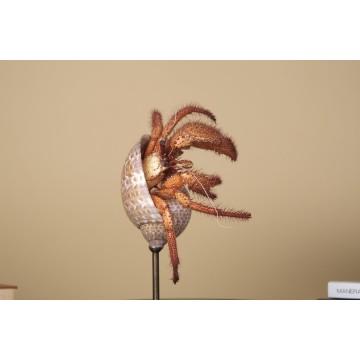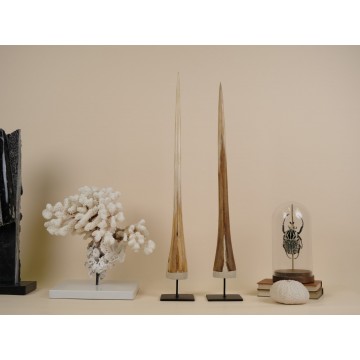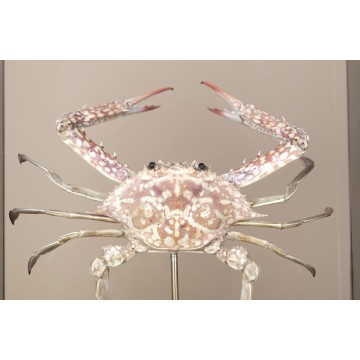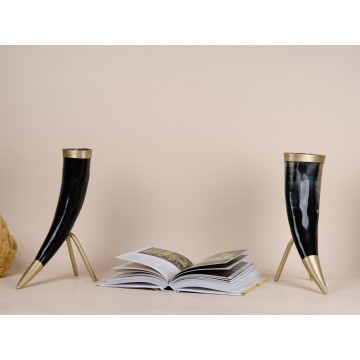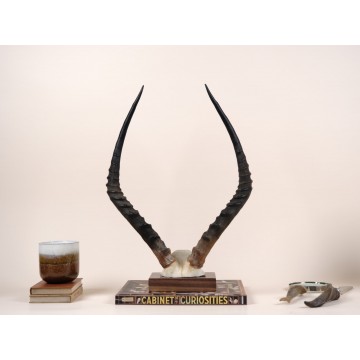Female Cape Eland antelope horns
A pair of female Cape Eland antelope, in brass bases, from Namibia. Its the biggest of all Elands, big bulls can reach 1000 kgs.
The common eland is sometimes farmed and hunted for its meat, and in some cases can be better used than cattle because it is more suited to African climates. This has led to some Southern African farmers switching from cattle to eland. Common elands are also pictured as supporters in the coat of arms of Grootfontein, Namibia.
Non-Cites species.








